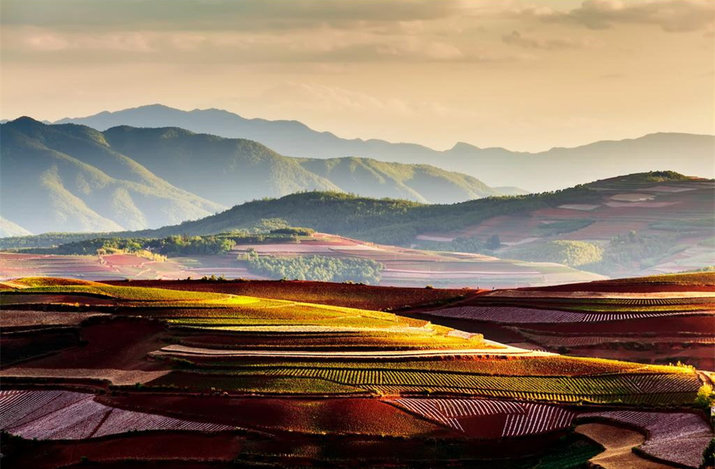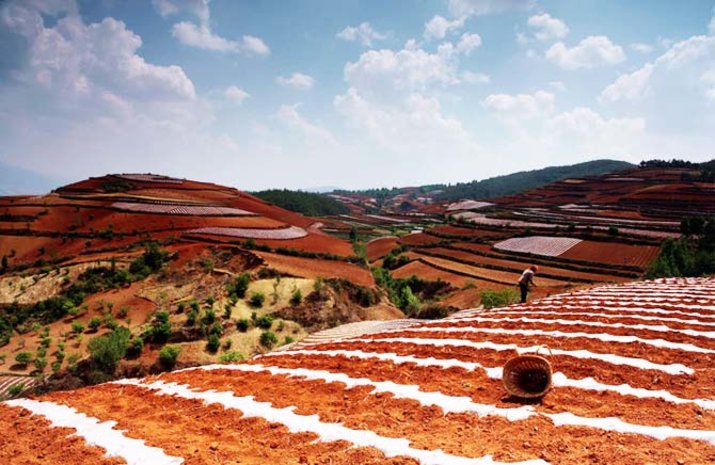
If there is one word that best captures Dongchuan Red Land, it must be palette. It is such an amazing spectacle that you can never imagine if you have never been there. It is like God knocked over his palette, dropping heavenly paint, which makes Dongchuan such a stunning masterpiece. Red, green, white and yellow are matched into rolling rainbow ribbons stretching to sky.

Yunnan's Red Soil Land is believed that it is the world’s most imposing and magnificent land of its kind, even more spectacular than that in Rio de Janeiro Brazil.

Dongchuan is located in a warm and humid climate. Iron oxide in the soil deposited slowly throughout centuries, gradually formed the dazzling color of different shades of redness. The brilliant soil, the golden yellow buckwheat and the dramatically blue skies make the region around Dongchuan a paradise for photographers.
Photo genetic, breathtaking, wonderful are not big words to describe this land. Those strong coulors of red, white, yellow, green, gold and blue remind people of Van Gough’s oil paintings. The real Van Goughs are the local peasants though, who are the painters and artists of this natural picture. They plough, they grow, they harvest, but meanwhile, not on purpose, they created the most beautiful land oil painting in the world. This land is becoming one of the most beloved paradises by photography fans from all over the world.

Driving to Dongchuan from Kunming by car takes about 3 hours. There are also overland buses that take up to six hours from the Norhern Bus Terminal in Kunming.

Dongchuan Red Soil Land is basically an all-year-round destination. In spring, it is the ocean of flowers turning the area to a colorful scenery; in summer it is beautiful wave of cornfields - it can get wet though troughout the rainy season (June - August). In autumn it is the "fairyland on earth" and in winter the landscape isn't less spectacular but the roads might be icy and it can be hard to get there. We usually recommend to visit the area in late spring / early summer (April - June) and in autumn after the peak of the rainy season (September - November).
- 3017 reads
